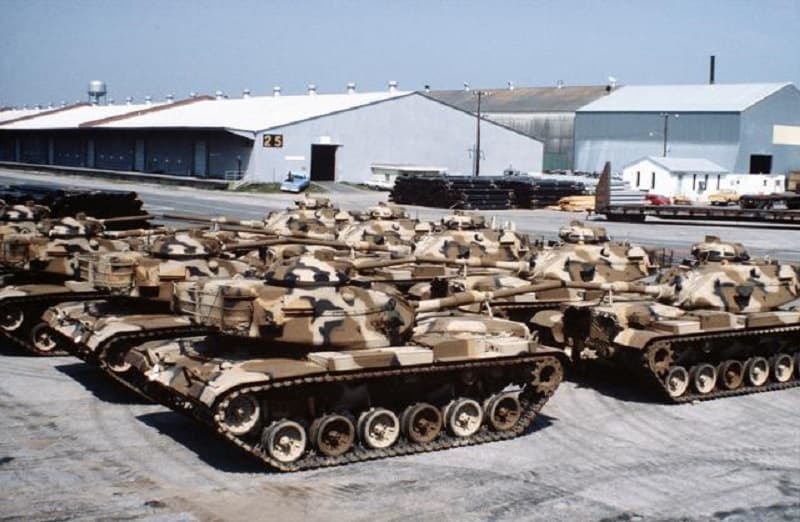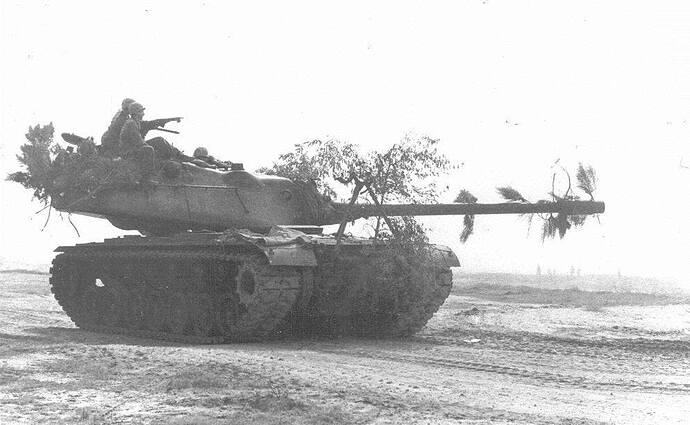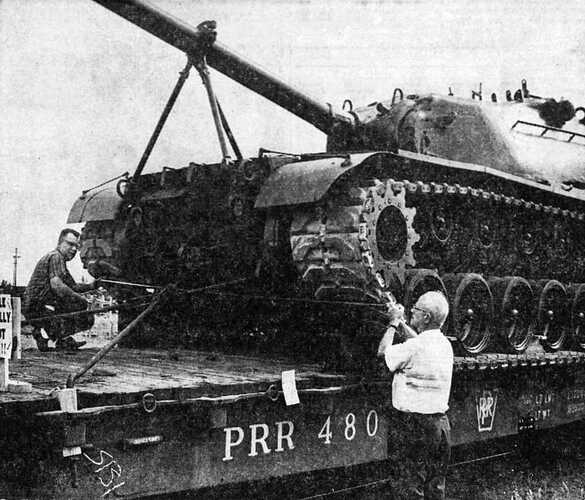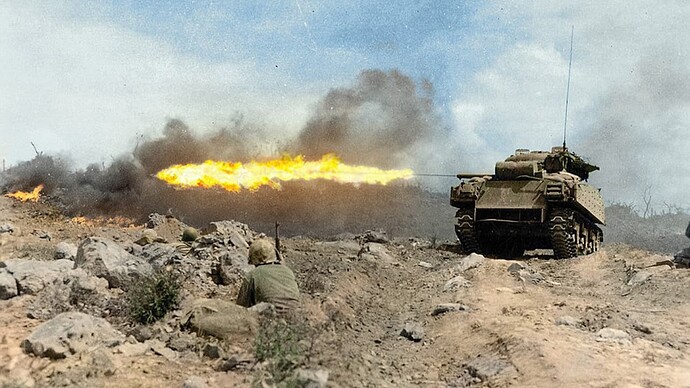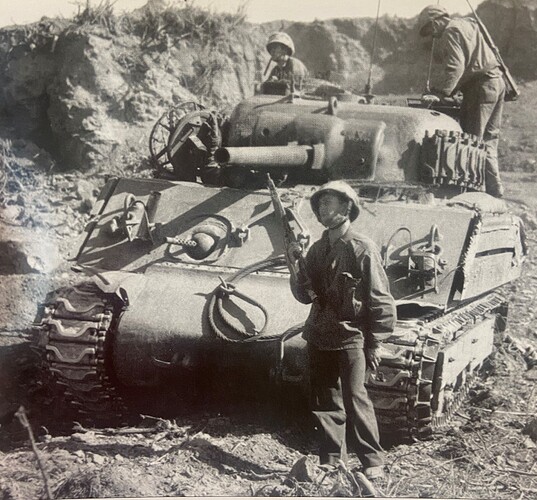M103 in MERDC ? This is a gate guard or a museum vehicle, painted in MERDC because it looks “catchy”, I suppose ? As far as I know, MERDC has not been used before the mid 70s and at this time, the M103 was not in service anymore ? Or am I wrong ?
This particular vehicle is on loan from the National Museum of the Marine Corps. This model was painted in Grey Desert MERDC, typical of vehicles stationed in the western US, like California and Texas.
USMC M60A1 tanks in Grey Desert MERDC at Camp Pendleton.
Is this at the Pima air museum?
Yep! The museum is storing all the tanks they have until the Tucson Military Vehicle Museum is built right next to the Air & Space Museum. As of naow, they have…
M103A2 Heavy Tank
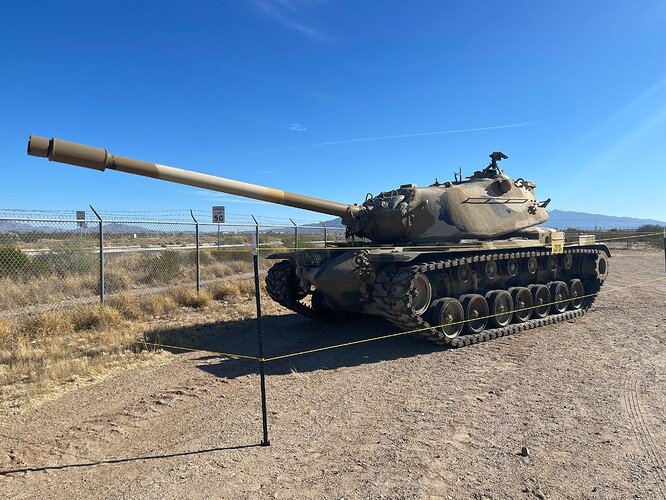
M60A1 RISE (P) with ERA
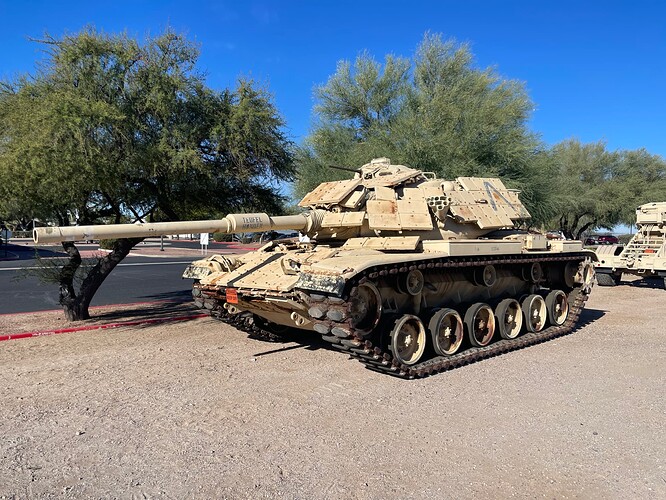
Iraqi T-72M
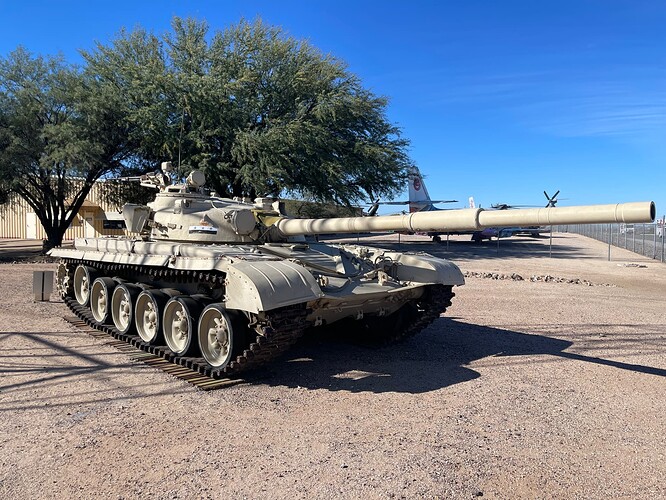
Buffalo MPV
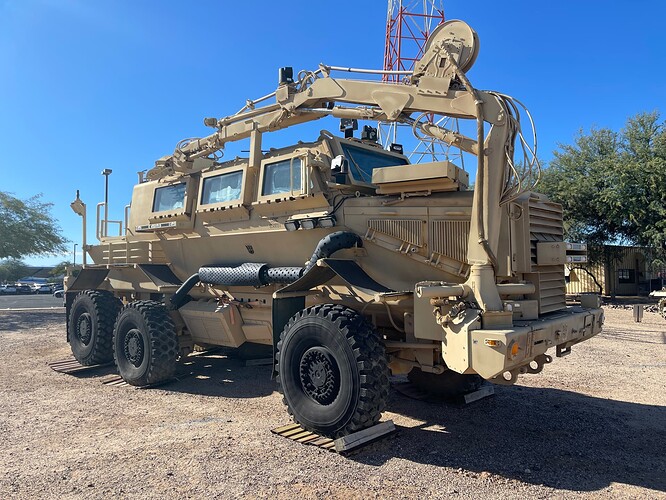
Husky Mk3 VMMD
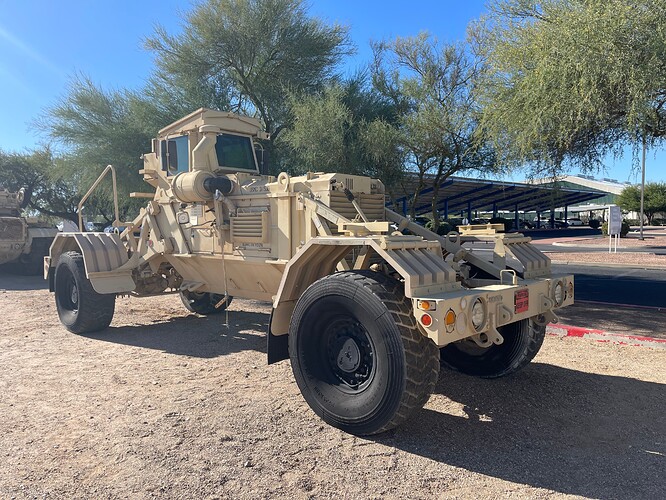
These are up front, in the parking lot; while they have a bunch more in the back of the museum; these you’ll have to pay admission and they’re all the way in the storage area. The ones they have include an USMC M1A1 FEP Abrams, an M4A3 Sherman, a couple T-62s, an LVTP-5, a DUKW amphibious truck and some others…
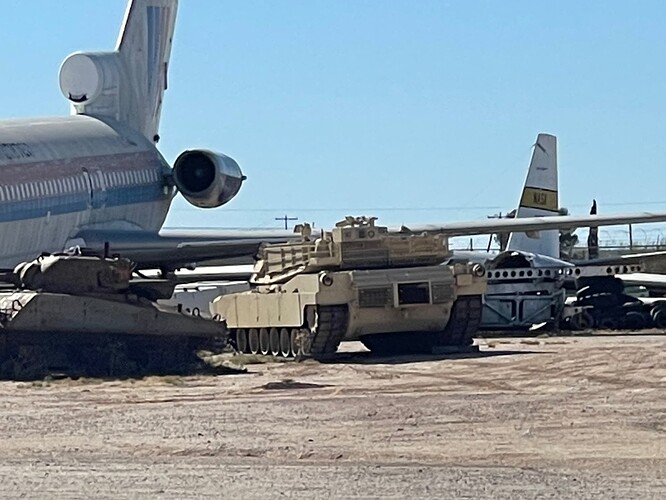
I am trying to figure out which is the correct sprocket for a M103A1. Takom at the cover of their instructions show the M103/M88 style sprocket but in the instructions show the M48/M60 style sprocket. They do provide both styles in the kit parts.
Only two photos of M103A1 tanks I have found thus far show both styles.
Wouldn’t Arizona vehicles be painted in the Red Desert MERDC scheme, though? I remember from many years ago seeing the yard of a National Guard unit in Phoenix (it’s been decades; I remember the visuals, but not the unit details) full of vehicles in Red Desert, and also, while driving back from Phoenix to San Diego, seeing an eastbound train with six flatcars loaded with M113s in the Red Desert scheme.
Like I stated before, this particular vehicle is on loan from the National Museum of the Marine Corps, so it most likely came from Camp Pendleton, and their vehicles were painted in Grey Desert MERDC.
That’s the most likely reason the vehicle is not painted in Red Desert MERDC.

I was more questioning the sweeping “western US” than the individual vehicle, although I’m not conversant with how the Army picked which regions got which MERDC schemes. The San Diego National Guard vehicles were all Grey Desert back then; looking at Google Maps, the resolution isn’t good enough to pick out camo patterns if they’re there; it looks like a mix of solid-painted vehicles in various shades of sand and forest green now.
If I am not mistaken that tank is also a National Marine Corps Museum vehicle and technically a flame tank. It was a gun tank on Iwo Jima. If close enough, you can see the nail welds on it.
Forest Green is what the vehicles came painted from the factory, with brown and black added at Brigade level support, tan was used because of the main threat we would face came from the Middle East, like Iran.
Now, we’re shifting our focus to Russia and China as potential points of interest, so our vehicles are painted in CARC Green now.
Back during the Cold War era, mainly in the 1970s, the US Army Military Equipment Research & Design Command (MERDC) came up with a camouflage system that could be suited for specific regions and climate areas that our forces could potentially fight in, if the Soviets ever decided to lock horns with us.
It was centered around several color combinations, which were (the numbers are the Federal Standard (FS) code):
| White | n/a |
|---|---|
| Desert sand | 30279 |
| Sand | 30277 |
| Earth yellow | 30257 |
| Earth red | 30117 |
| Field drab | 30118 |
| Earth brown | 30099 |
| Olive drab | 34087 |
| Light green | 34151 |
| Dark green | 34102 |
| Forest green | 34079 |
| Black | 37038 |
I figured all those weld marks were meant for something. So it’s a “Ronson” Sherman.
Colorized version. Iwo Jima, 1945.
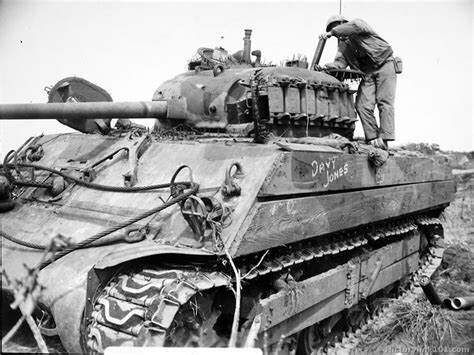
A Marine Sherman with the rebar “nails” welded on top of the hull and turret.
The tank they have was converted in the summer of 45 after that battle to a flame tank.
They believe it is this tank from taken from Harper’s Iwo Jima book, page 83.
That’s close to what the motor pool at Fort Bliss looked in the mid 80s. The 3rd ACR fielded M60A1s in desert grey. We had a HUGE motor pool (one per squadron, iirc). The regiment fielded over 102 MBTs, even more M113s and M901s. Motor pool even had AVLBs, and M60a2s, all in glorious MERDC desert grey.
And M109’s, fuel tankers, jeeps, etc, etc, etc…
